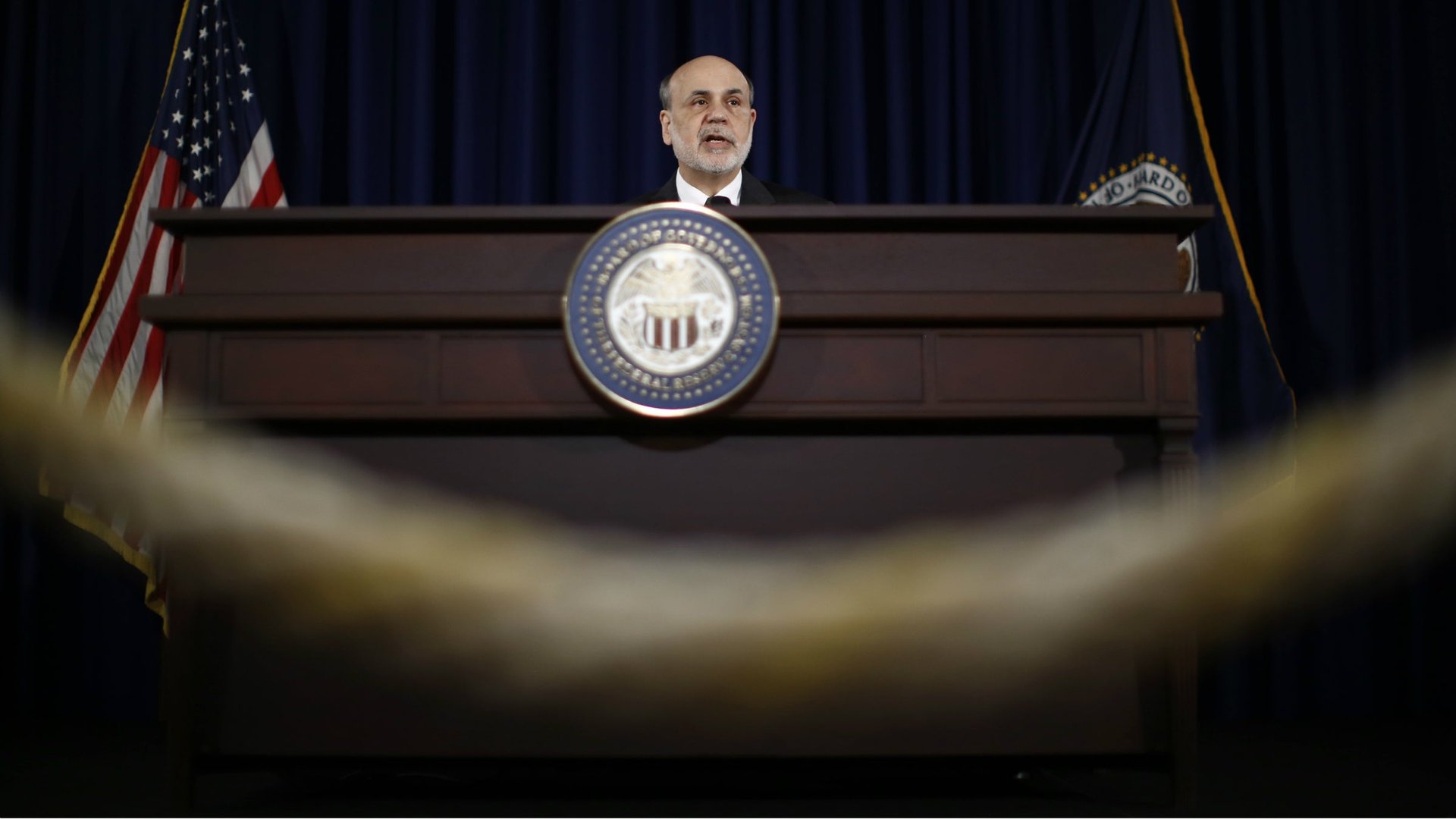The US Federal Reserve leaves holes through which its statements could leak out early
When journalists get early access to US Federal Reserve statements, the system has flaws that make it easy to see how the information could get out early. That’s what may have happened last week with the Fed’s surprise decision not to taper its bond-buying program. The news started to move markets at the very millisecond of its official release, earlier than should have been possible.


When journalists get early access to US Federal Reserve statements, the system has flaws that make it easy to see how the information could get out early. That’s what may have happened last week with the Fed’s surprise decision not to taper its bond-buying program. The news started to move markets at the very millisecond of its official release, earlier than should have been possible.
“We will be conducting follow-up conversations with news organizations to ensure our procedures are completely understood,” a Fed spokesperson, who asked not to be named, said in a statement. Officials there won’t discuss what measures are taken to prevent early releases of Fed statements. But we’ve pieced together the standard operating procedure, and it seems to leave holes through which data could leak.
For big releases like last week’s statement by the Federal Open Market Committee, the Fed actually uses the US Treasury department’s press room, located in the Treasury Building. Journalists are let into the room at 1:45 p.m. ET, which is 15 minutes before the statement’s official release.
At 1:50 p.m., Fed officials throw copies of the statement onto a table in the middle of the room. The reporters scramble to get a copy, read it, and digest the news as fast as they can.
“You come away with scratches on your arm,” said a reporter who used to be part of the scrum. “It’s an absolute madhouse.”
TV reporters are escorted out of the room at 1:58 p.m., according to CNBC, so they can stand in front of cameras and wait to deliver the news at exactly 2 p.m. Other reporters are allowed to open up telephone lines with their newsrooms before 2 p.m., but they can’t say anything except “standby” until it’s time.
But those rules aside, the Fed takes few precautions to ensure the statement doesn’t leave the room early. Reporters are not required to surrender their cellphones, and they can bring computers into the room and connect to the internet before the release. The journalists are supposed to use their own systems to transmit the news at 2 p.m. and not a moment before, but there’s little to stop an early transmission.
For instance, a reporter could send a report to his news organization before 2 p.m., and have it scheduled to publish at the right time. But in the interim, the data has physically left the room. That’s officially against the Fed’s rules, but because reporters have open access to the internet, it’s plausible. CNBC asked several news organizations whether they transmitted data before 2 p.m.; two said they did not and two others declined to answer.
That arrangement contrasts with the Commerce and Labor departments, which require journalists to connect to the internet through “black boxes” that prevent data from physically leaving the lock-up room until the appointed time. While the boxes are not fool-proof, they are at least a precaution, which the Fed doesn’t take.
Commerce and Labor use the term “lock-up” to describe their procedures for giving journalists early access to data releases. But in interviews, officials at the Fed and Treasury said their system shouldn’t be described that way.
It’s not clear why the Fed hasn’t moved to a more secure system. Officials won’t say. We’ve submitted a Freedom of Information Act request seeking more details on the Fed’s data release procedures.
Treasury officials stressed that, while the process may occur in their building, the department has no involvement in how the Fed statement is released.